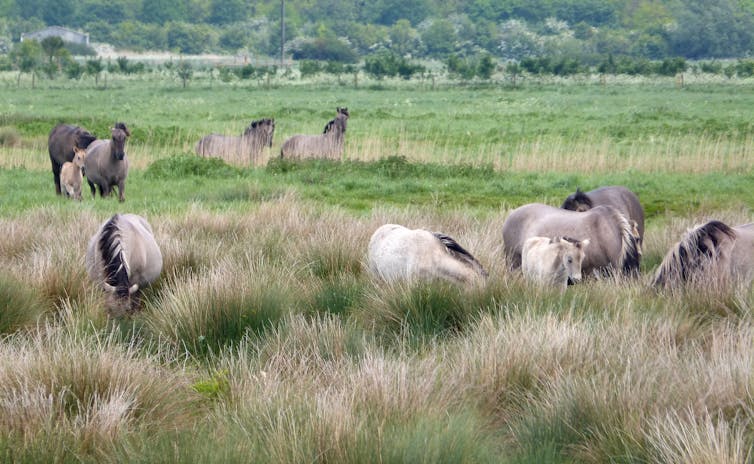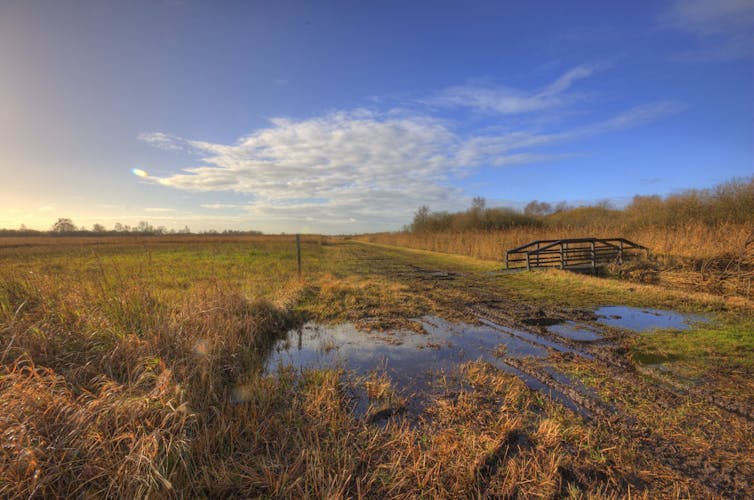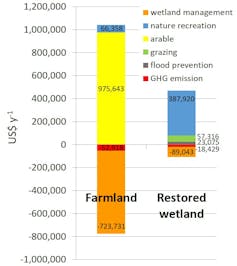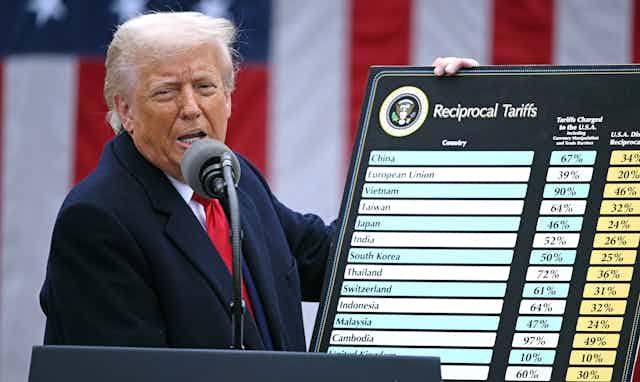
Gailhampshire/Flickr, CC BY
Kelvin S.-H. Peh, University of Southampton
Researchers, public officials and NGOs often ask, “Can we put a price on forests?”. The question may sound absurd or even cynical, but as an expert in environmental-conservation practices, I believe that measuring biodiversity value could help us better preserve it. Evaluating the “price” of a forest, a lake or a hill for a village, a city or even a country would ensure better conservation practices.
This is why we developed the Toolkit for Ecosystem Service Site-based Assessment (TESSA). The project is designed to support global environmental governance by allowing local NGOs to quantify – arguably for the first time ever – the real economic impact or advantages of maintaining an ecosystem for biodiversity conservation.
Thousands of local NGOs, agencies, government bodies or even private citizens can use the tool to measure the impact of environment conservation and help protect the environment. The data collected would improve the information available and could help produce better public policies. At the very least, public authorities could not deny or minimise the importance of protecting biodiversity.
The simple toolkit will present a convincing economic case – backed up by real figures – to make the argument that it is actually in the national interest to preserve biodiversity.
Assessing the benefits of protecting biodiversity
As recently as a decade ago, environmental NGOs – and especially those in the developing world – faced immense challenges in their efforts to persuade governments that there are direct and distinct advantages in protecting nature and safeguarding its benefits (also termed ecosystem services or nature’s contributions to people).
Of course, grassroots organisations could call upon and draw inspiration from the “ecosystem approach” – a framework for understanding the nexus between people and their environment. It was endorsed by the Convention of Biological Diversity adopted in 2000 to illustrate – albeit often in abstract terms – the value of nature and the importance of safeguarding healthy and resilient natural environments.
However, NGOs still lacked a yardstick, a “ready reckoner”, that would allow them to account for these benefits in monetary and non-monetary ways. For instance, clean water could also be measured using non-monetary metric such as “number of sick days avoided” to demonstrate a wetland’s contribution to economic, health and social well-being for the community.
The challenges of creating such a yardstick were substantial. First, there were conceptual hurdles: understanding ecosystem services is a relatively technical task, and failing to grasp its diverse implications could make any assessment of the benefits a daunting task. Many practitioners also did not know then that different ecosystem services do not always overlap. For example, a biodiversity hotspot may not provide significant carbon storage and sequestration.
Thus, important trade-offs between ecosystem services delivery and biodiversity conservation objectives were often neither acknowledged nor identified, and therefore not dealt with in a transparent manner.
The challenge of communicating about nature
Technical challenges also prevented many practitioners from using the environmental-benefits argument to support their advocacy efforts. They often lacked the required information about the benefits provided, or information that could have helped to communicate the “value of nature” to decision-makers and regulators. For example, they would not know how to identify which environmental benefits might be affected by land-use management decisions.
A lack of knowledge on how to collect field data – required to measure ecosystem services – was a serious impediment, as was the need for technical skills (such as modelling and mastery of geographic information systems for detailed mapping of different types of land use) that are deemed necessary for assessments of environment benefits.
Back then, the ecosystem service was deemed a difficult concept to understand, so there was no universally applicable guidance available on how to measure such a concept or foster collaboration among government, conservation practitioners, scientists, landowners, businesses and local users of natural resources (collectively known as stakeholders) to improve equity in benefits and costs sharing.
There was also the communication aspect: practitioners did not know how to link their findings to policy, explain uncertainty and variables, or present the ecosystem services arguments in a coherent and easily-digestible manner.
Helping conservation effort
For all these reasons, our team (partners currently from BirdLife International, the Royal Society for the Protection of Birds, Tropical Biology Association, UNEP-World Conservation Monitoring centre, the University of Cambridge, the University of Southampton and Anglia Ruskin University) started the TESSA project in 2010 with the aim of developing a practical suite of benefits assessment tools for supporting ongoing conservation efforts.
We have developed an interactive PDF manual that contains modules to walk users step-by-step through a practical assessment of a wide range of ecosystem services:
- global climate regulation (including carbon storage and greenhouse gas fluxes)
- water-related services (flood protection, water provision, water-quality improvement)
- nature-based recreation and tourism
- wild goods (food, fibre, energy, etc.)
- cultivated goods (crops, livestock, fish, timber)
- coastal protection services
- pollination services
- cultural ecosystem services (i.e., the interactions between people and nature in an environmental space).
These modules provide clear, accessible protocols on how to collect data with stakeholders and worked examples on how to analyse them. The tool also emphasises the importance of conducting the same assessment for the most likely alternative state of the site, e.g. after restoration, so that the net consequences of land use change in terms of costs and benefits can be calculated.
 The UK National Trust used TESSA to calculate that Wicken Fen was worth far more as wetland than as cropland.
The UK National Trust used TESSA to calculate that Wicken Fen was worth far more as wetland than as cropland.Alex Brown/Flickr, CC BY
Making the case for wetlands
An example of how TESSA can assist in land-use decision-making: the UK National Trust used TESSA to calculate that each hectare of Wicken Fen is worth US$200 more per year as wetland than as farmland (see the figure below), providing evidence for supporting the Wicken Fen Vision Project – the creation of a 5,300 hectare (13,100 acre) restored wetland in Cambridgeshire.

A comparison of the ecosystem-service values and management costs in 2011 (in US dollars for 479 hectares per year) of restored wetland at Wicken Fen and of the same land if returned to agriculture use. K. Peh, Author provided
Such comparative frameworks help to elucidate any trade-offs between benefits on which policy-makers may be called upon to arbitrate. TESSA also provides practical guidance on how to communicate the results – including the inherent uncertainties – to a broader public.
Thanks to this tool, users can provide critical information on the most important locations for biodiversity and ecosystem services, and thus demonstrate that the protection of wildlife is not separable from or comes at the expense of economic growth and prosperity.
This directly refutes the oft-repeated argument that poorer nations somehow have to make a binary choice between economic growth and biodiversity protection. By offering a valuation mechanism for conservation, one can show that protection of wildlife can go hand in hand with economic development. TESSA data can also inspire the implementation of a country’s ecotourism policy, given that many of the natural areas can be a magnet for ecotourism.
Spread TESSA to help our environment
The project has already been adopted by several international government bodies, including the Policy Support Portal of the Intergovernmental Science-Policy Platform on Biodiversity and Ecosystem Services (IPBES). It is also recommended in a recent report from the IUCN-World Commission on Protected Area report as an important tool for valuing ecosystem services in protected areas, key biodiversity areas and natural World Heritage Sites.
Since 2014, an extensive network of conservation practitioners in Africa and Asia has been trained to use TESSA, thereby establishing a unique community of regional users to support biodiversity conservation. According to our records, NGOs have applied TESSA globally in at least 96 protected and unprotected areas in 26 countries to highlight the nature’s economic and cultural contributions.
To be sure, this is merely a dent in the global conservation challenge. The task now is to improve TESSA’s adoption by the private sector where it could enable businesses to demonstrate that operations can both respect environmental standards and promote respect for conservation. Ultimately, there are no better incentives for governments than the proposition that it is possible to both protect the environment, and pursue economic growth policies.

Created in 2007 to help accelerate and share scientific knowledge on key societal issues, the AXA Research Fund has been supporting nearly 650 projects around the world conducted by researchers from 55 countries. To learn more, visit the site of the Axa Research Fund or follow on Twitter @AXAResearchFund![]()
Kelvin S.-H. Peh, Lecturer in Conservation Science, University of Southampton
Cet article est republié à partir de The Conversation sous licence Creative Commons. Lire l’article original.




20 Comments
Pingback: smooth jazz
Pingback: therapist san diego
Pingback: Douceur Beauty
Pingback: บริการรับจด อย
Pingback: Blackberry Dream for sale
Pingback: anti stress
Pingback: เว็บปั้มวิว
Pingback: กระเบื้องยาง SPC
Pingback: Whore Parody Movie Transsex Sex Movie cuck-old sex voucher My site: anal pussy vouchers transgender Feet Fetish Latina Anal sex Shaved Pussy Medium Tits Small Tits voucher Brunette Mature MILF discount code Anal Sex porn Lesbian vouchers Threesome Promote
Pingback: https://stealthex.io
Pingback: best overwatch aimbot
Pingback: รับซื้อกระเป๋าแบรนด์
Pingback: รถรับส่งสนามบินในญี่ปุ่น
Pingback: jebjeed888
Pingback: สูตรหวยฮานอย
Pingback: ผลิตเสื้อยืด
Pingback: ทัวร์ธุรกิจจีน
Pingback: top webcam sites
Pingback: massage Bangkok
Pingback: Massage